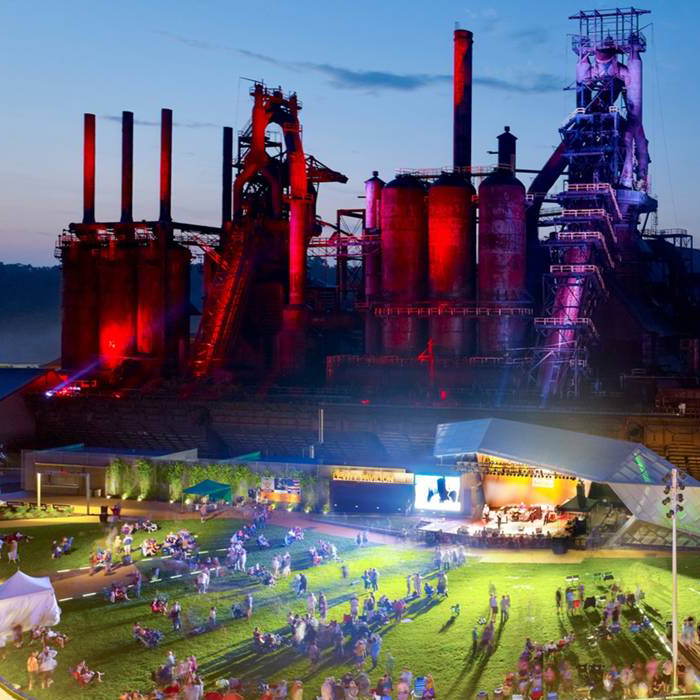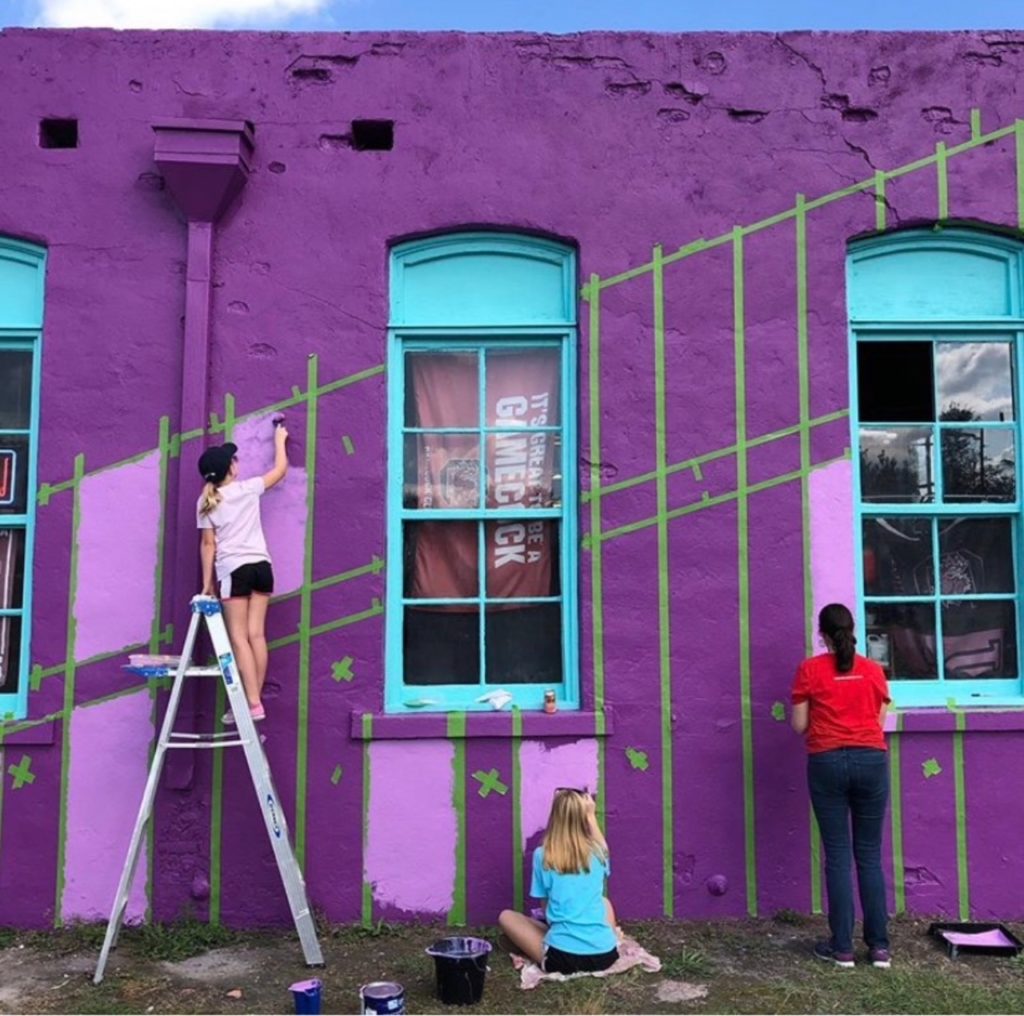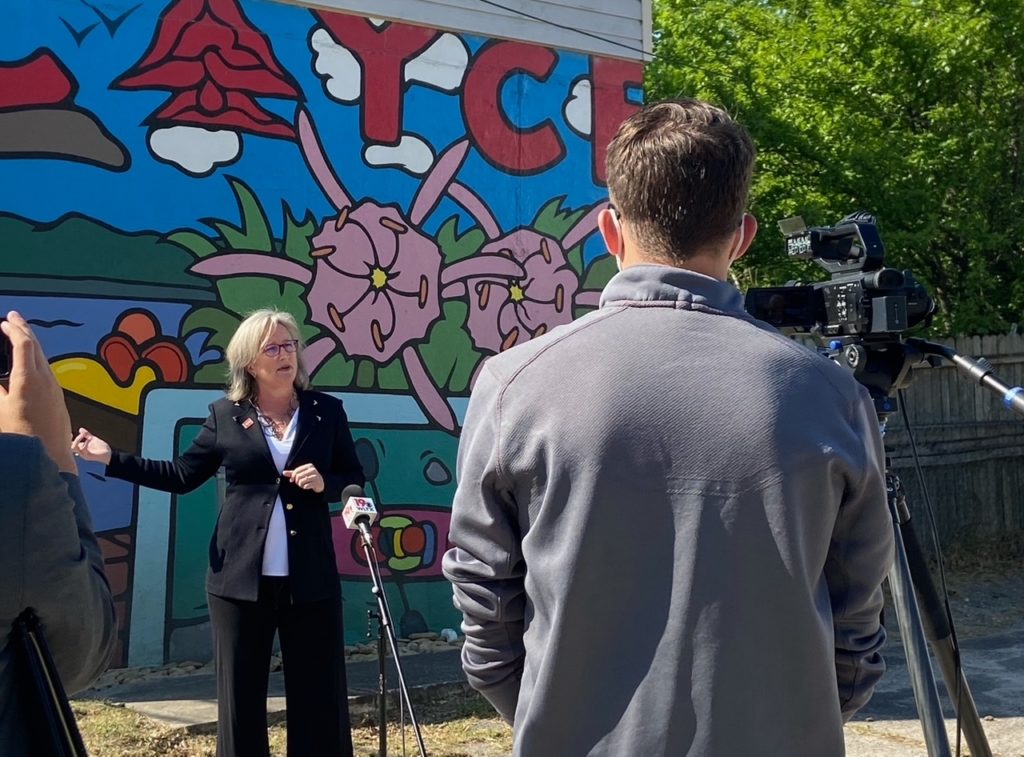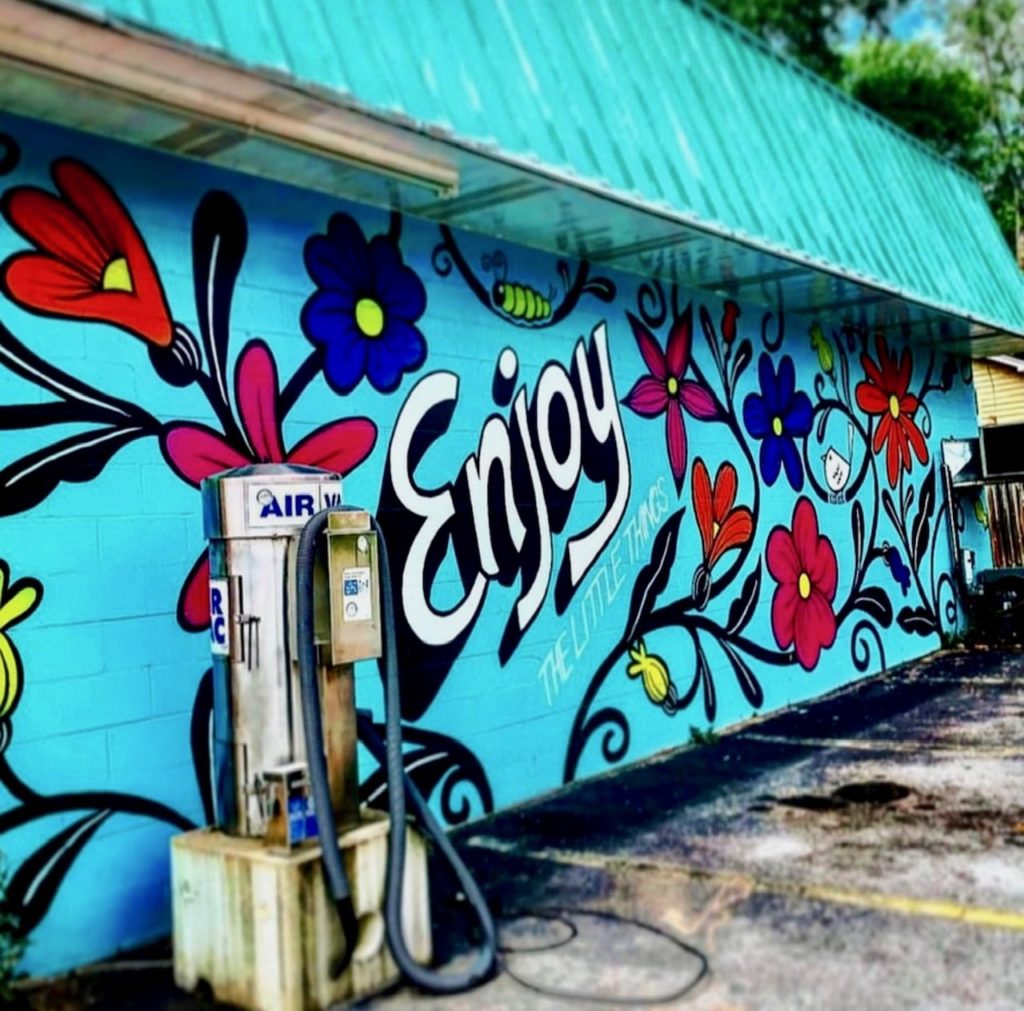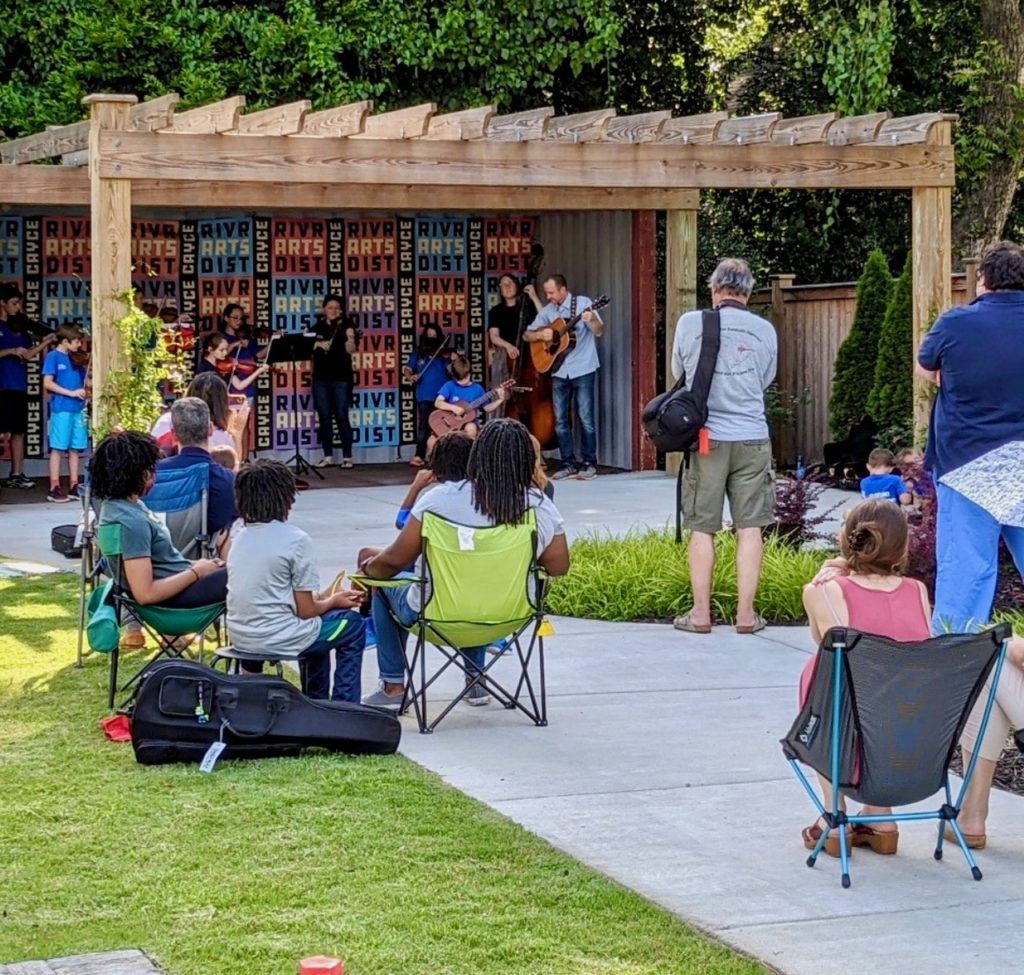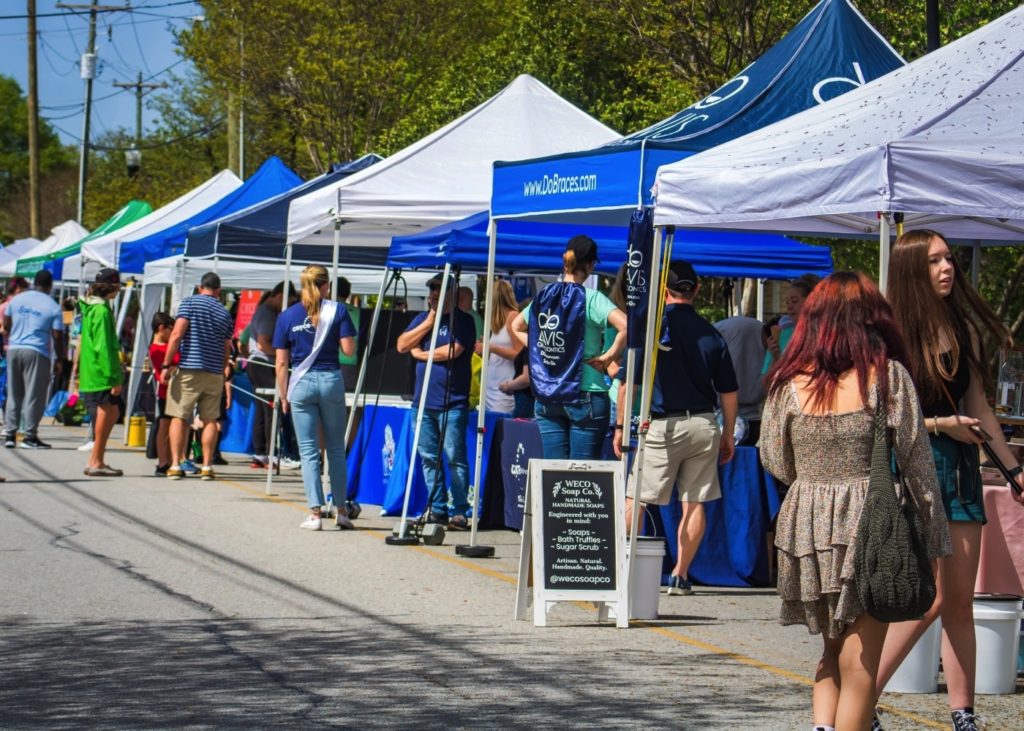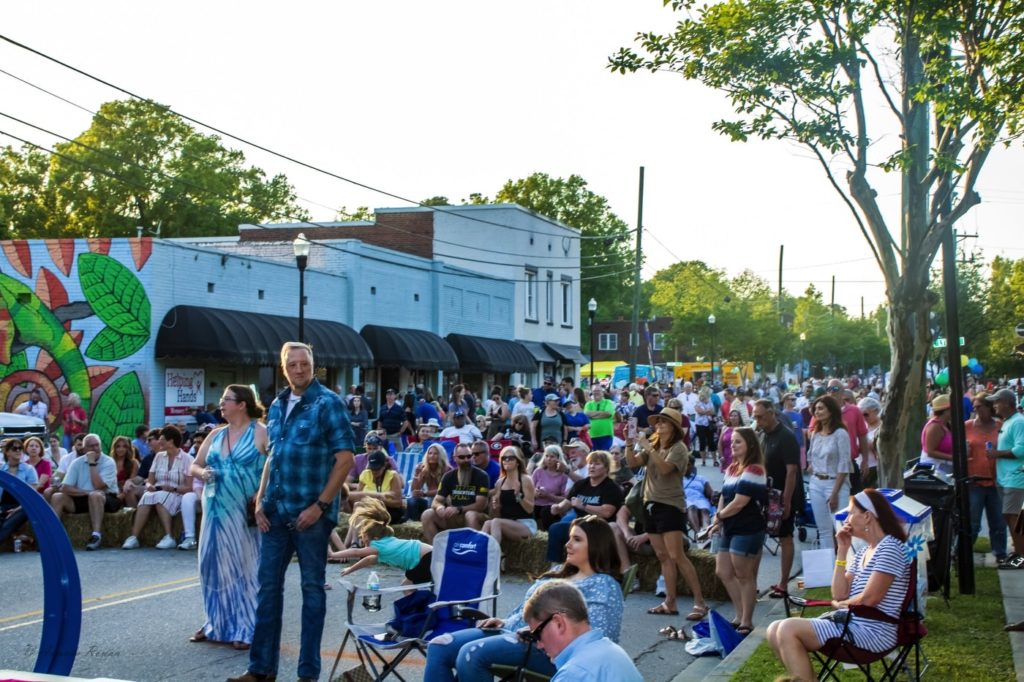If I hadn’t brought this project to MICD, I have no doubt this area would still be shuttered – or someone with a lot of resources may have taken on the risk of a larger-scale redevelopment, but it wouldn’t be the great mix of small businesses and vibrant community we have now.
Mayor Elise Partin (2008 - Present)
2015 MICD South
Introduction
At the MICD South special session in Northwest Arkansas in 2015, Mayor Elise Partin of Cayce, SC sought advice on rebuilding the “original heart” of her city, a community of 14,000 just outside the state capital, Columbia.
Since then, a series of pop-up events and concerted efforts from city leaders have sparked a renaissance on State Street and spurred the creation of the Cayce River Arts District. Bolstered further by advice during a pilot version of MICD Alumni Advising in 2020, Mayor Partin has gone on to help shape a vibrant corridor where “people and businesses want to be.”
Challenge
“The original heart of our city had languished.”
In 2015, all but one business had shuttered in the historic State Street corridor, which once held City Hall and a wealth of vibrant businesses. Over time, development patterns began favoring car-oriented retail outside the urban core, so instead of serving as the economic hub of the city, State Street’s buildings sat vacant and dragged down quality of life in the surrounding neighborhoods. In addition, the area faced connectivity issues and a car-dominant environment. However, Three Rivers Greenway would soon connect the area to downtown Columbia and beyond, with a world-class trail just a few blocks away along the Congaree River.
Mayor Partin sought to spark an “authentic revitalization” of State Street focused on small businesses, the arts, and improving quality of life for residents nearby – without compromising housing affordability. In addition, she wanted to ensure that the arts could remain at the district’s core as it evolved, avoiding the displacement of artists often seen during similar revitalization efforts.
Impact
During the MICD session, the term “pre-vitalization” stuck with Mayor Partin, introduced by the late Tommy Pacello on that Resource Team as “the art of showing what’s possible.” 1.5 years later, the City of Cayce threw the first Soiree on State in partnership with the Cayce Arts Guild, which attracted 1,500 people for family-friendly fun, food, music, arts, and crafts (all from local artists and vendors). The event was a wild success, “but it was a street party with a secret mission,” says Mayor Partin: in preparation, city leaders asked the owners of vacant buildings to clean out their interiors and allow artists to set up pop-up galleries inside storefronts. When visitors came inside, they saw the great potential for these spaces – and a few businesses opened in these storefronts soon afterwards.
The city went on to infuse public art into the area, receiving multiple grants for vibrant murals as well as paintings that pay homage to a building’s historic contents, paintings on manhole covers, sidewalk art, and wayfinding directing people to the riverwalk. This attracted more businesses, like a restaurant at a key anchor corner, and added a sense of vibrancy and community. The city also created special zoning to allow artist live/work spaces and unique signage.
Still, five years later, many buildings sat vacant and no artists had yet moved into the district. In 2020, Mayor Partin participated in MICD Alumni Advising to get more personalized advice from a team of two advisors. At their recommendation, Mayor Partin has fought for a higher vacant building fee to motivate owners to make progress. “There’s already a fee now – it’s paid by the adjacent business owners whose shops are next to dilapidated buildings and who lack a stronger customer base nearby. It’s paid for by the community because we miss out on more jobs, more buildings with energy and life, more places to gather and support small businesses.”
Meanwhile, the Soiree on State returns stronger each year, with 3,800 attendees at the Spring 2025 festival. Going forward, Mayor Partin hopes to continue supporting the small business renaissance on State Street and shape an economically thriving corridor that contributes to a great quality of life for residents nearby. She also plans to continue sharing these lessons in arts-based economic development with other city leaders across South Carolina.
Lessons for City Leaders
- “Pre-vitalization works”: Find ways to help your community envision the possibilities in underutilized spaces, both public and private. Instead of a street party, this might be a pop-up activation at a vacant building, or another low-cost way to show people what’s possible and create excitement that leads to real investment.
- Embrace your power as “chief convener”: Seek out neighborhood leaders and creative community members, focusing on connecting and supporting the people who can help make change – from entrepreneurs to artists to youth.
- Focus on sparking organic growth instead of just offering incentives. Building stakeholder buy-in and nurturing locally-owned small businesses can attract those seeking to add community value (not just financial value), and sustain the district’s success over the longer term.


